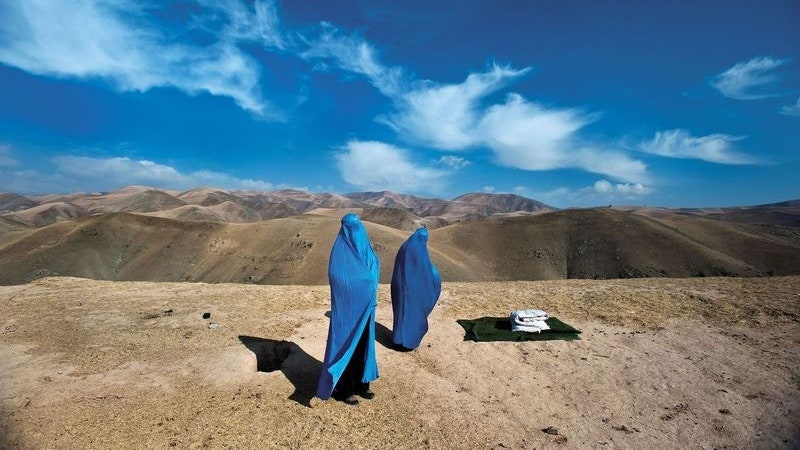The life of a war photographer may sound like the elegant, globe-trotting stuff of office-cubicle daydreams, but as celebrated conflict photojournalist Lynsey Addario notes in her 2015 memoir, It’s What I Do, the reality of the job is often less flashy—and more emotionally driven—than it appears. “I see images in newspapers, magazines, on the internet—refugee camps in Darfur, women in the Democratic Republic of the Congo, wounded veterans—and my heart leaps,” she writes of pursuing the work that regularly separates her from her family and often puts her directly in harm’s way. “I am suddenly overcome with this quiet angst—a restlessness that means I know I will go.”
Now, Addario’s first solo gallery exhibition, “Raw, curated by Danny Moynihan, is on view at the Lyles & King gallery in New York City, where it will run through November 9. Vogue spoke to Addario about making the leap from photojournalism to fine art; the importance of capturing the subtler, less violent parts of war; and her advice for other women in similar fields. The conversation has been edited and condensed.
Vogue: How does it feel to see so much of your work in one place?
Lynsey Addario: I mean, it’s a tiny collection compared to 25 years of war photography, but it’s really interesting to see the curation and these images of war and climate issues framed and on the walls of a beautiful gallery in New York.
What was it like working with curator Danny Moynihan?
It was amazing. Danny is actually my husband’s father’s cousin, so I’ve known Danny for years, but he also has always been a really big advocate of my work and is obviously very established in the art world as an incredible artist and writer. It was a great process; it was very collaborative. I started by dumping decades [worth] of my archive on him—some of my favorite images that have sold in the past but also ones that have resonated with me over time. And then I just allowed him to do his curation because I thought it would be interesting to see how someone who’s not at all in the world of journalism would curate this body of work for a fine-arts space. One of the things that I always try to do with my work is to get people who wouldn’t normally pay attention to conflict or humanitarian crises to stop and see a photo and ask questions and engage with the issue. So crossing that boundary from journalism to fine art is a really exciting process because it’s a whole different audience.
In this time of seemingly unceasing global conflict, is there anything you wish viewers of the news—and your work—understood better or differently?
